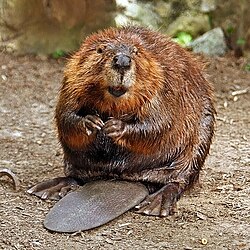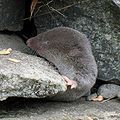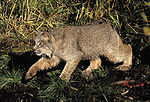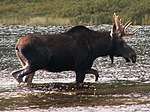|
List of mammals of New York
This is a full list of the mammals native to the U.S. state of New York.[1][2][3][4][5][6][7] [8] [9] [10]  The following tags are used to highlight each species' conservation status as assessed by the International Union for Conservation of Nature:
Opossums, order DidelphimorphiaDidelphimorphia is the order of common opossums of the Western Hemisphere. Opossums probably diverged from the basic South American marsupials in the late Cretaceous or early Paleocene. The Virginia opossum is the only marsupial/opossum species in New York. 
Insectivores, order EulipotyphlaEulipotyphlans are insectivorous mammals. Shrews closely resemble mice, while moles are stout-bodied burrowers. 

Lagomorphs, order LagomorphaThough lagomorphs can resemble rodents, and were classified as a superfamily in that order until the early 20th century, they have since been considered a separate order. They differ from rodents in a number of physical characteristics, such as having four incisors in the upper jaw rather than two. 
Rodents, order RodentiaRodents make up the largest order of mammals, with over 40% of mammalian species. They have two incisors in the upper and lower jaw which grow continually, and must be kept short by gnawing. 


 
Bats, order ChiropteraThe bats' most distinguishing feature is that their forelimbs are developed as wings, making them the only mammals capable of flight. Bat species account for about 20% of all mammals.  
Carnivores, order CarnivoraThere are over 260 species of carnivorans, the majority of which feed primarily on meat. They have a characteristic skull shape and dentition. 


 

Even-toed ungulates, order ArtiodactylaThe even-toed ungulates are ungulates whose weight is borne about equally by the third and fourth toes, rather than mostly or entirely by the third as in perissodactyls. 

Cetaceans, order CetaceaCetaceans are the mammals most fully adapted to aquatic life with a spindle-shaped nearly hairless body, protected by a thick layer of blubber, and forelimbs and tail modified to provide propulsion underwater.
See alsoReferences
|